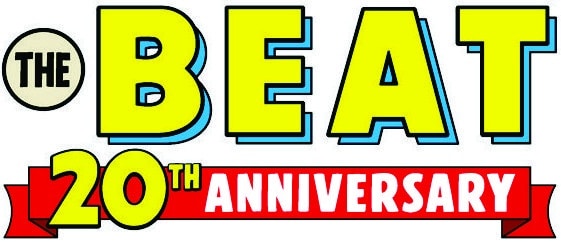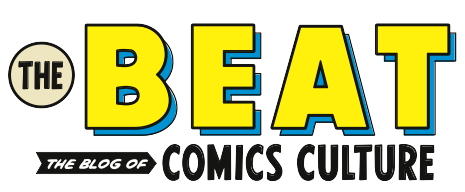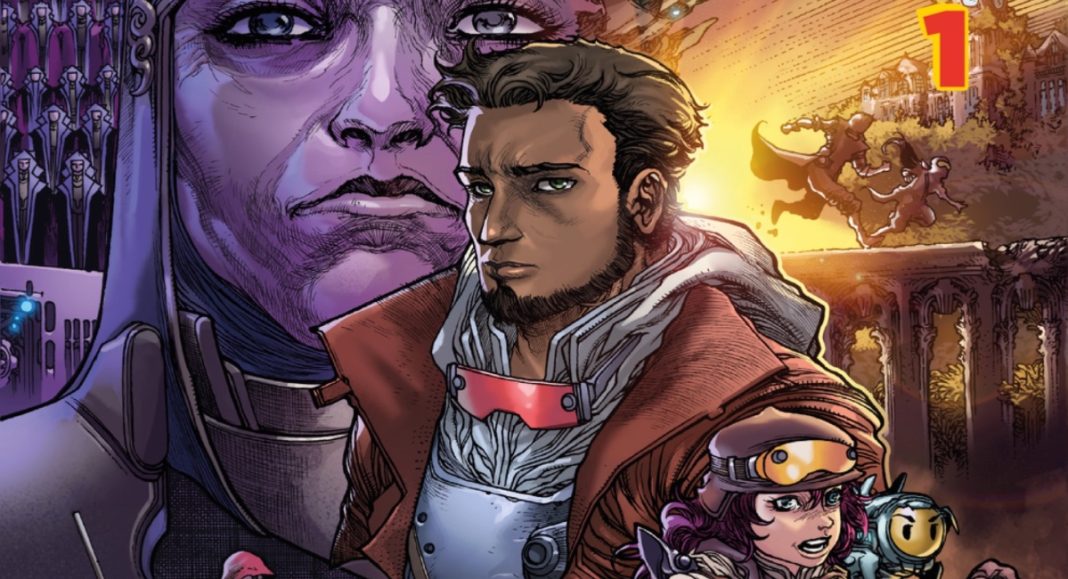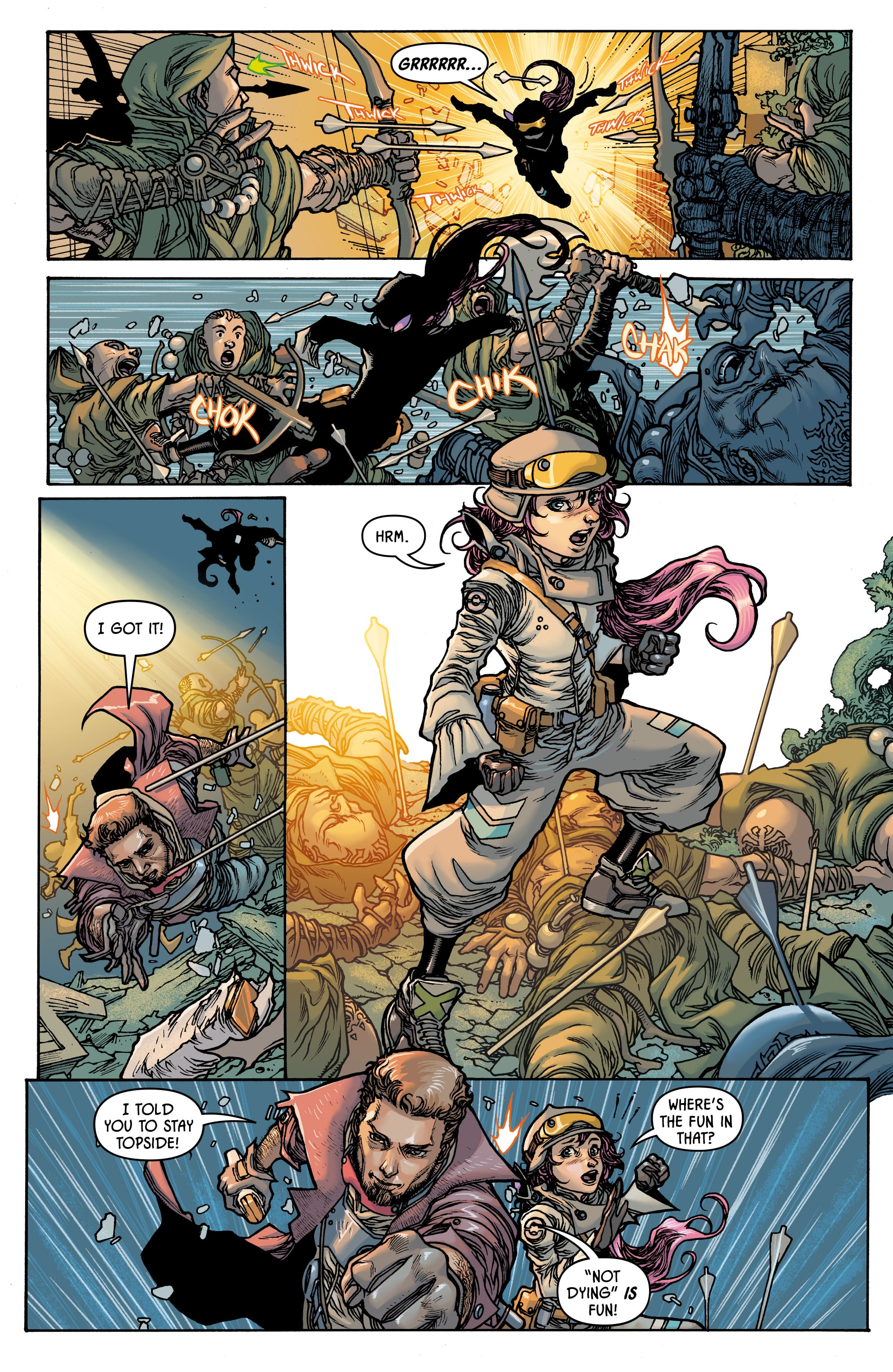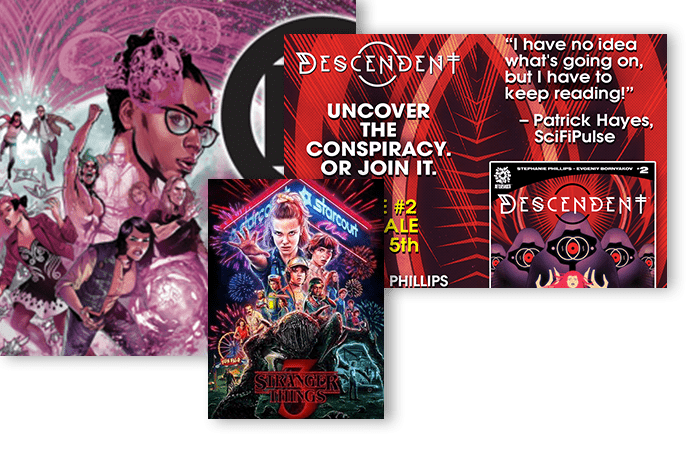Marc Guggenheim, the writer behind beloved television series like Arrow and the ongoing comic series Star Wars: Jedi Knights, made his Comixology Originals debut on April 29, 2025, on the comic book series The Adventures Of Ulysses Monarch, with artist Harvey Tolibao, colorist Mark Englehart, letterer Diego Sanches, and cover colorist Kevin Tolibao. The series will follow Futuristic adventurer and archeologist Ulysses Monarch as he searches for rare artifacts from the 20th and 21st centuries.
Born on September 24, 1970, in Long Island, New York, Guggenheim initially pursued a law career before shifting into writing. Today, he’s recognized for his extensive work in television (The Practice, Tales of Arcadia, CSI: Miami, Legends of Tomorrow, Law & Order), film (Green Lantern, Percy Jackson: Sea of Monsters), comics (The Flash, X-Men, Spider-Man, Resurrection), and literature (Overwatch, In Any Lifetime).
The Beat caught up with Guggenheim to discuss his first Comixology Originals project, The Adventures of Ulysses Monarch, his collaboration with Tolibao, how AI will impact media, and what we can do about it.
OLLIE KAPLAN: Can you briefly describe The Adventures of Ulysses Monarch to our readers, and what they can look forward to?
MARC GUGGENHEIM: The premise is pretty simple: Ulysses Monarch is an adventurer on Earth a thousand years from now. He’s developed a reputation as an “obtainer of rare antiquities” — like a certain fedora’d archeologist — but it just so happens that the relics are from our time.
KAPLAN: What inspired the concept for this new comic? Are you exploring any new themes in this story that you haven’t explored before?
GUGGENHEIM: There’s a line in Raiders of the Lost Ark, where Belloq shows Indiana Jones a simple pocket watch and says, “See this? Three dollars from a vendor in the street. But I take it, bury it for a thousand years, and it becomes priceless.” And that got me thinking about what it would be like to be an archaeologist of our present time and civilization.
For me, the fun of that is that it presents an opportunity to hold a mirror up to our world and examine it from a new and different perspective — in this case, the perspective of time.
KAPLAN: How did you approach worldbuilding in The Adventures of Ulysses Monarch?
GUGGENHEIM: A lot of early cogitation, to be honest. For me, the endeavor of worldbuilding begins with asking myself questions: What are things like in the year 3026? Has humanity conquered the stars? Have we met aliens? What language(s) are people speaking? Who’s in charge? Who wants to be in charge?
KAPLAN: Can you tell our readers more about your collaboration with artist Harvey Tolibao? Were there any moments where Tolibao’s art changed how you saw a scene playing out?
GUGGENHEIM: Whenever I work with an artist, I always offer them to change up what I’ve described in the script if they envision a scene playing out a different way. Harvey didn’t take me up on that as I recall, but the reason I thought he’d be a perfect match to this idea is because he and I had done a sci-fi X-Men story together and I knew how great he is at design and worldbuilding. It just seemed like a perfect fit between artist and concept.
KAPLAN: As your first ComiXology Originals project, what drew you to the platform for this particular story? Or, how did the collaboration come together?
GUGGENHEIM: I had a general meeting with ComiXology head honcho Jeff DiBartolomeo, and we just really hit it off. Jeff and I share a lot of the same sensibilities when it comes to comics and the comic book industry, and I was really enamored with ComiXology’s business model and the amount of creative control they offer. Image is great, and I enjoy working with them, but they can only publish so many books. There need to be more publishers that offer the amount of creative freedom that Image does and ComiXology is one of the few.
KAPLAN: You’ve worked across many mediums, in addition to being a “recovering lawyer.” What lessons from your legal and/or TV and film writing background most directly influence how you approach comics in 2025?
GUGGENHEIM: That’s a great question. The truth is, I feel like I learn something new with every script I write, regardless of the medium. That being said, I think my TV and film background has really helped inform my comic book writing. These days, there are less and less examples of omniscient or first-person narration (a trend that, I believe, began with Y: The Last Man, which had no narration), and my TV and film work has trained me to be able to tell a story without that device. That’s just one example. I’m sure there are more minor examples to be found as well.
KAPLAN: What is something you think comics let you do better than anything else?
GUGGENHEIM: The idea that the limits of what can be done visually are solely the province of the artist’s talent — rather than budget — remains incredibly powerful and uniquely suited to the medium of comics. As much as I’d love to say that the writing is important, comics is a visual medium at the end of the day — and one where the ceiling in terms of what can be achieved visually is virtually non-existent.
KAPLAN: You participated in the WGA Strike. How do you see AI tools or digital workflows impacting writing and production?
GUGGENHEIM: I think AI is going to come for post-production first. There’s a lot that AI can do that’s very well suited to the work done in post, whether it be creating a first assembly of a cut, VFX, or ADR. However, not all the developments are going to be positive. It’s going to mean the elimination of a lot of jobs at a time when those jobs are already scarce. It’s pretty scary.
KAPLAN: Do you know what people can do about it?
GUGGENHEIM: That’s a great question. Unfortunately, this is a problem with no realistic solutions. I mean, the unions can — as they are — try to build in contractual protections to require that certain work be done by humans and not AI. But that’s pouring water into a leaky bucket. It’s something — which is better than nothing — but history teaches us that there’s no stopping the evolution of technology costing people their jobs.
The only real “solution” (and I hesitate to use that word) is to evolve along with the technology. The politicians aren’t coming to save us. We’re going to have to evolve our current jobs — or, more likely, into new ones — that take into account the new ways of working presented by AI. In other words, if you’re a buggy whip manufacturer, better start learning how to repair an engine.
KAPLAN: Is there anything else that you would like to add?
GUGGENHEIM: I appreciate that you asked about AI. Monarch is so much about using the future to understand the present a little better. And any contemplation of the future has to include the consideration of AI — in all its positive and destructive forms.
Check out previously released preview pages below:
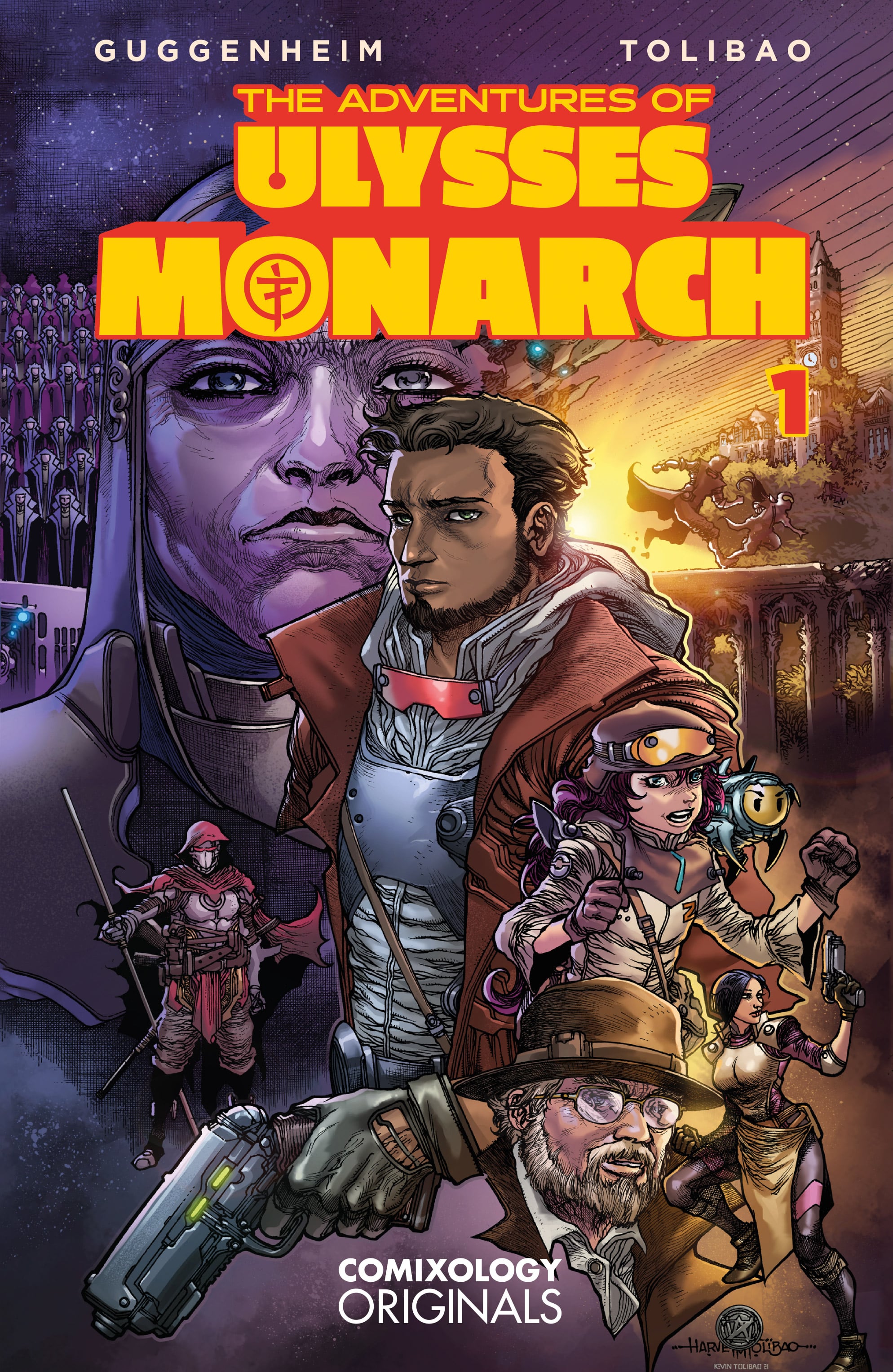
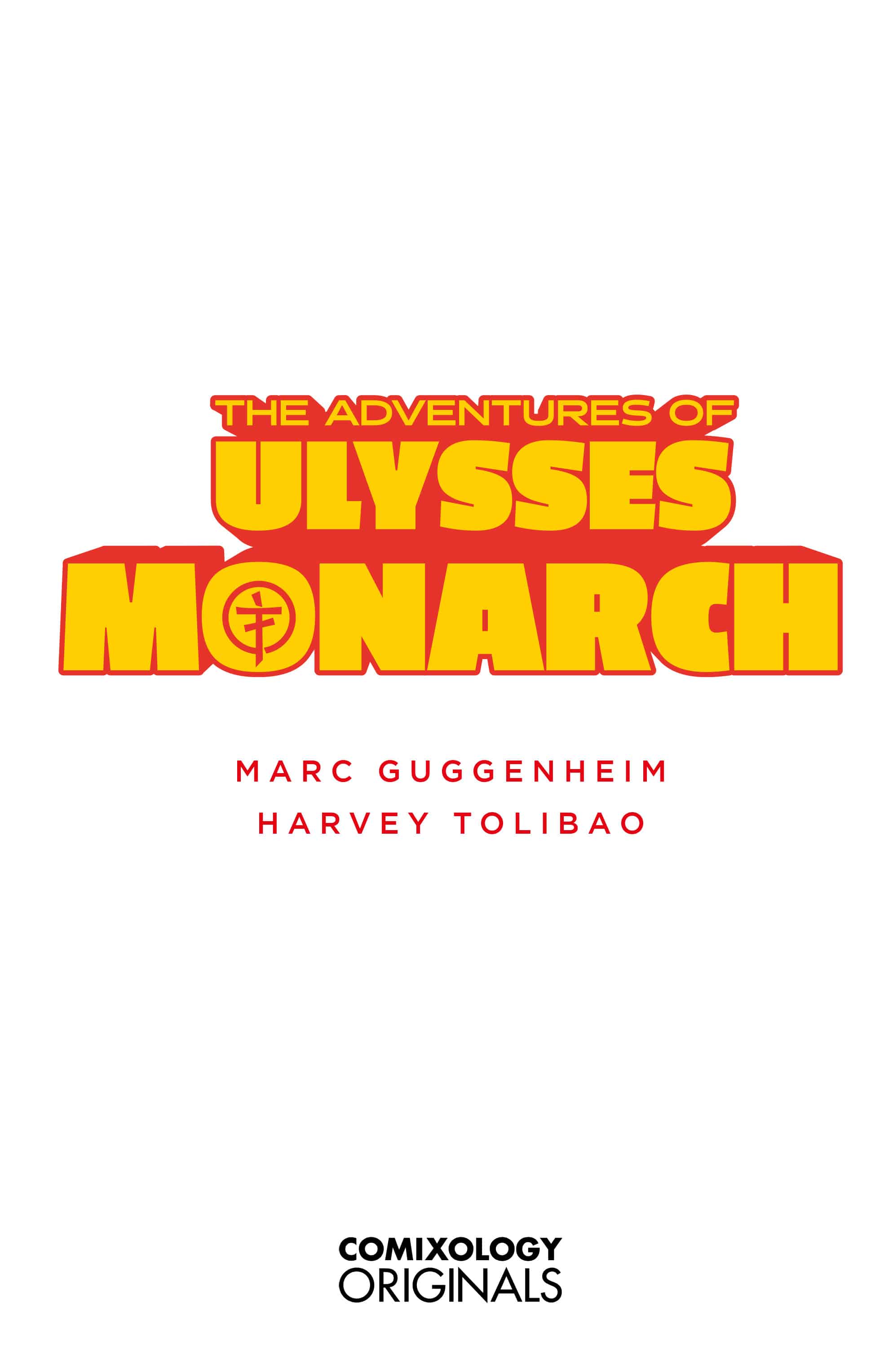
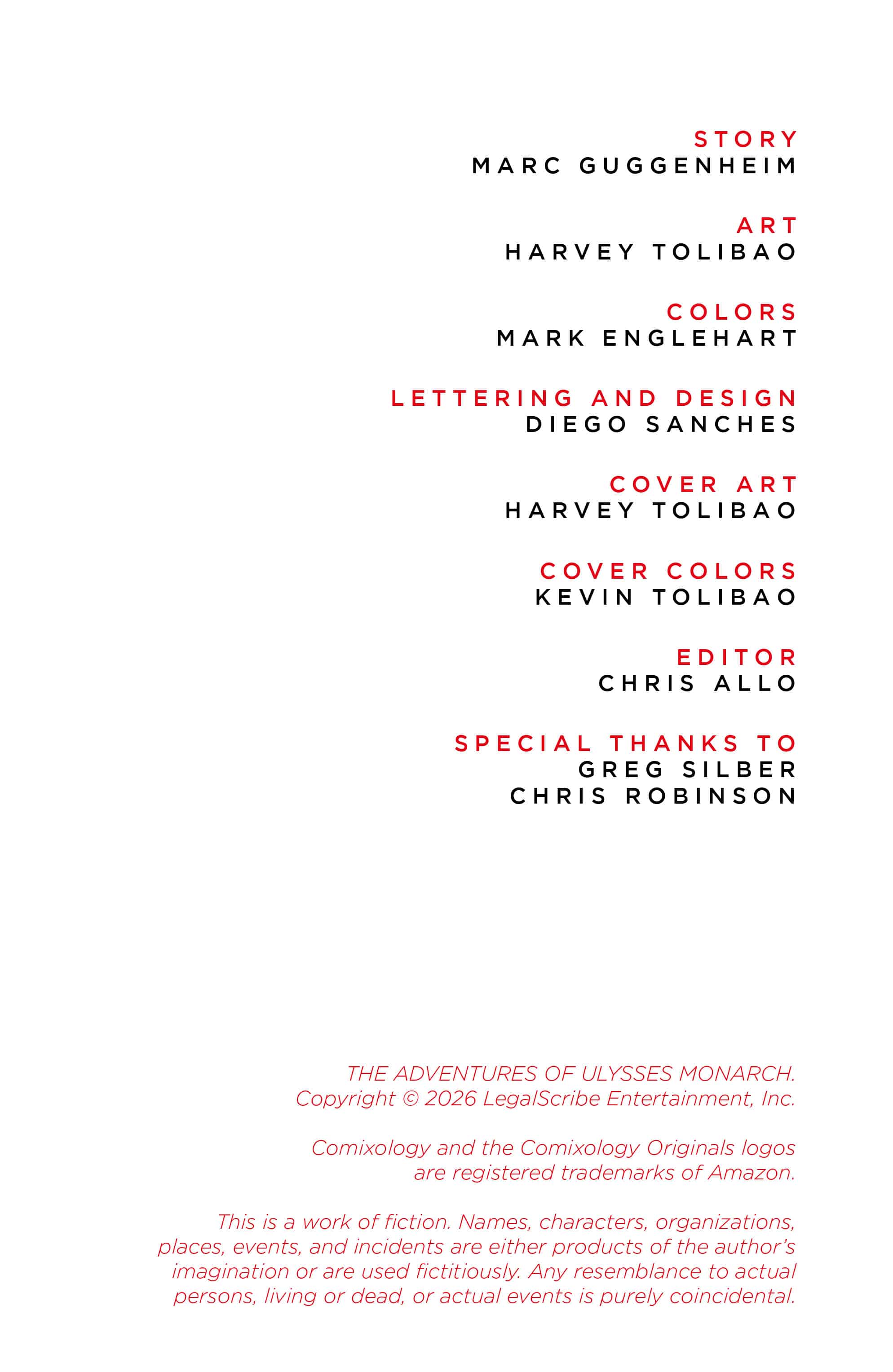
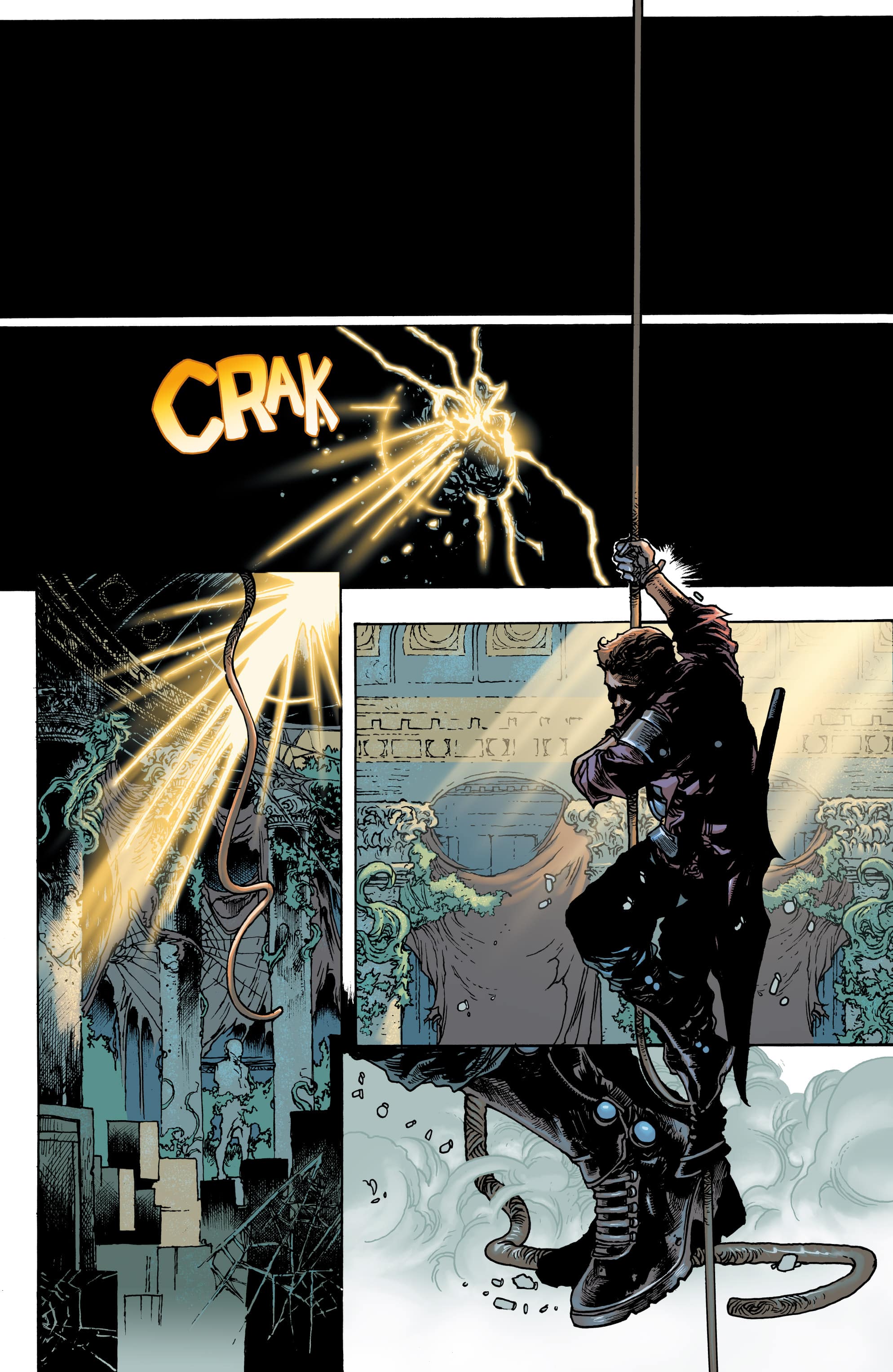
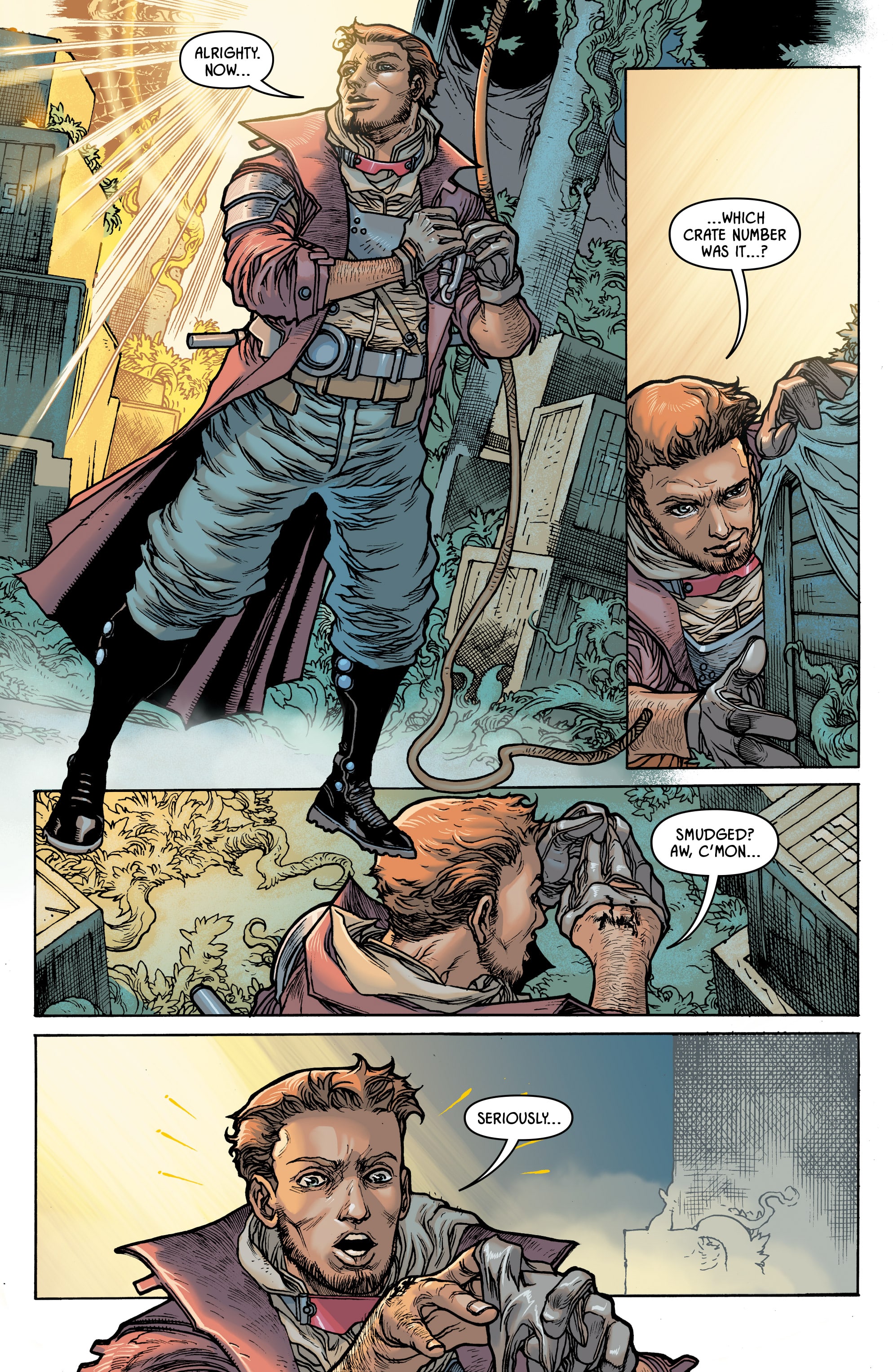
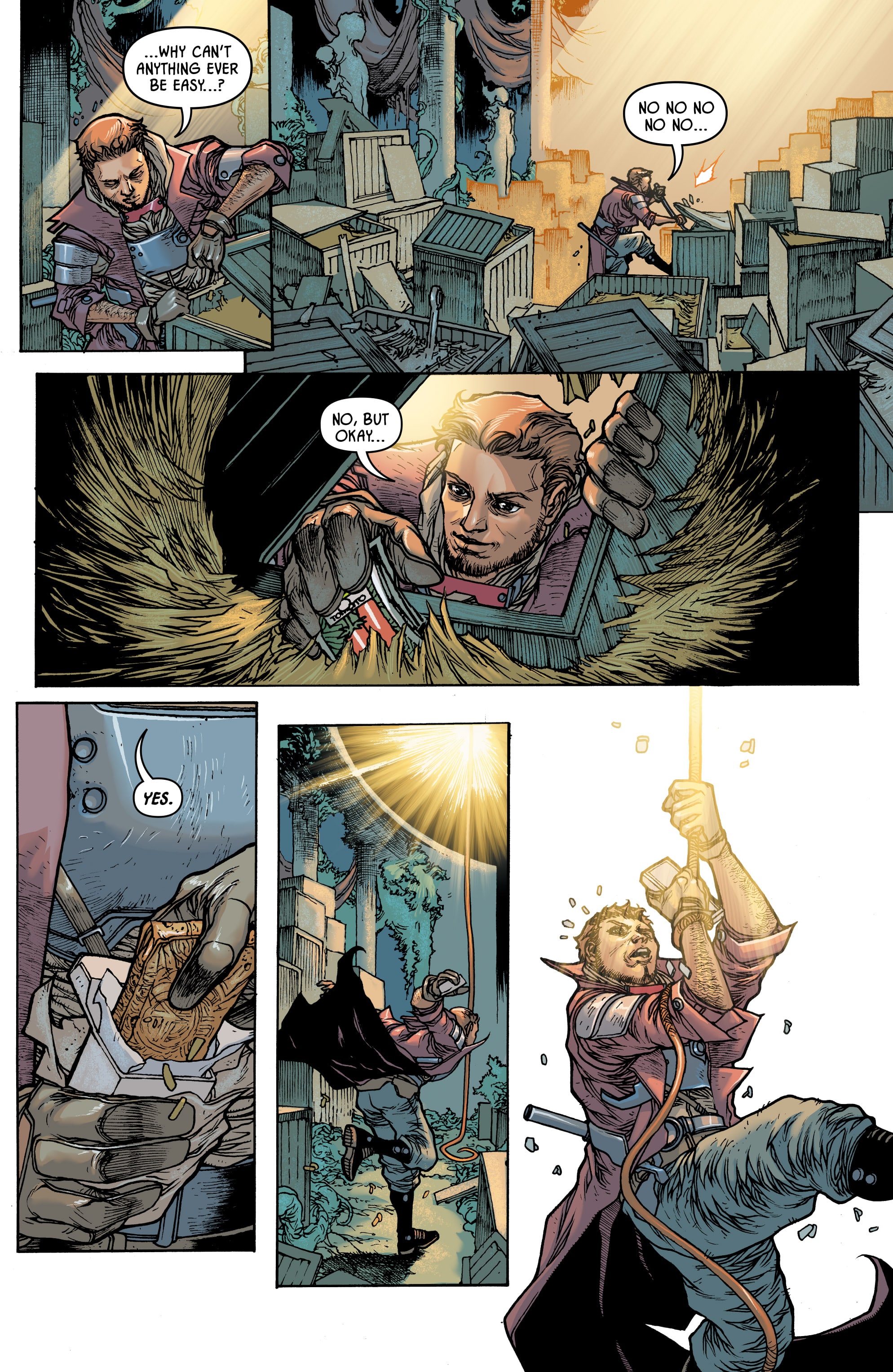
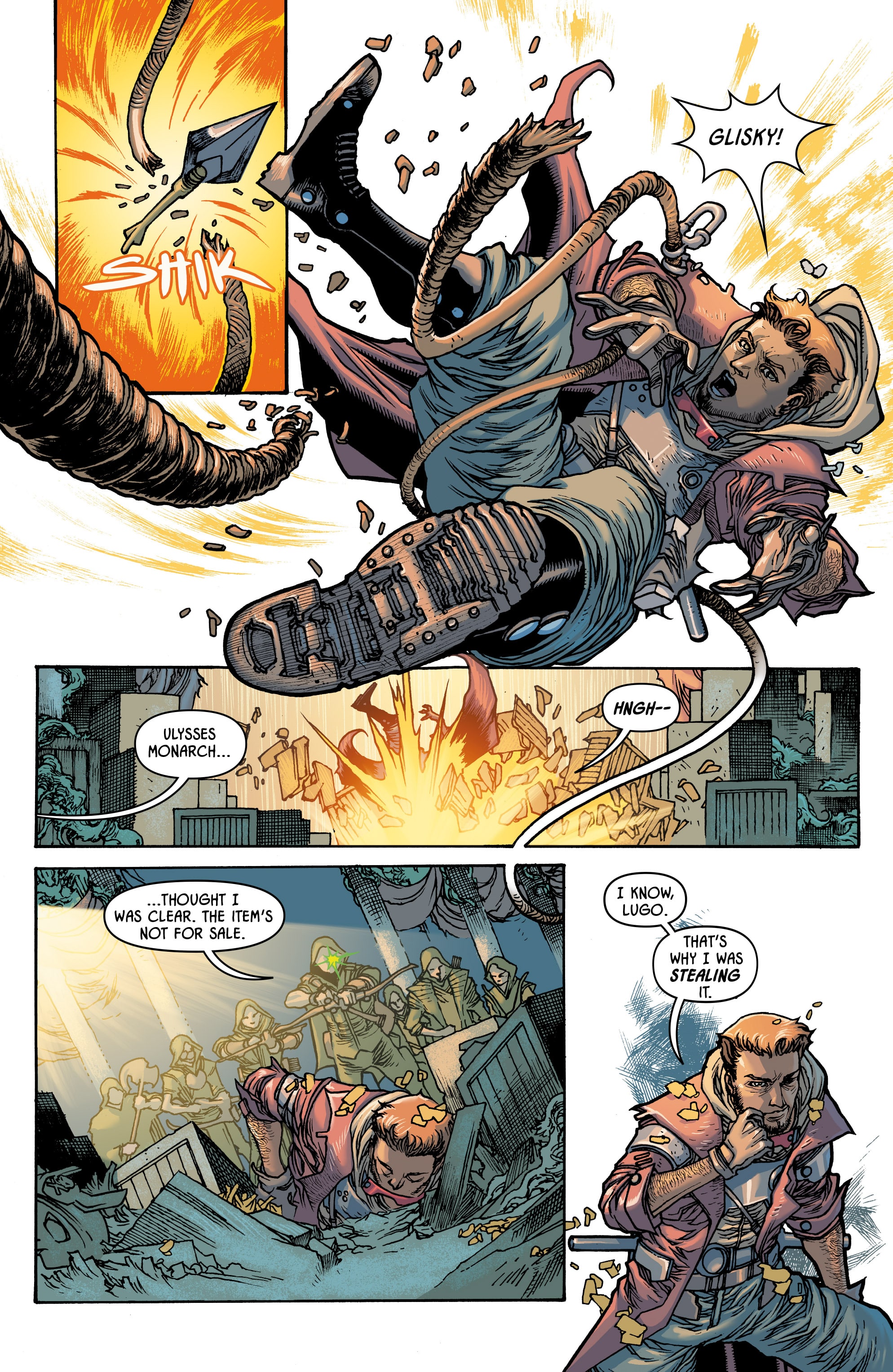
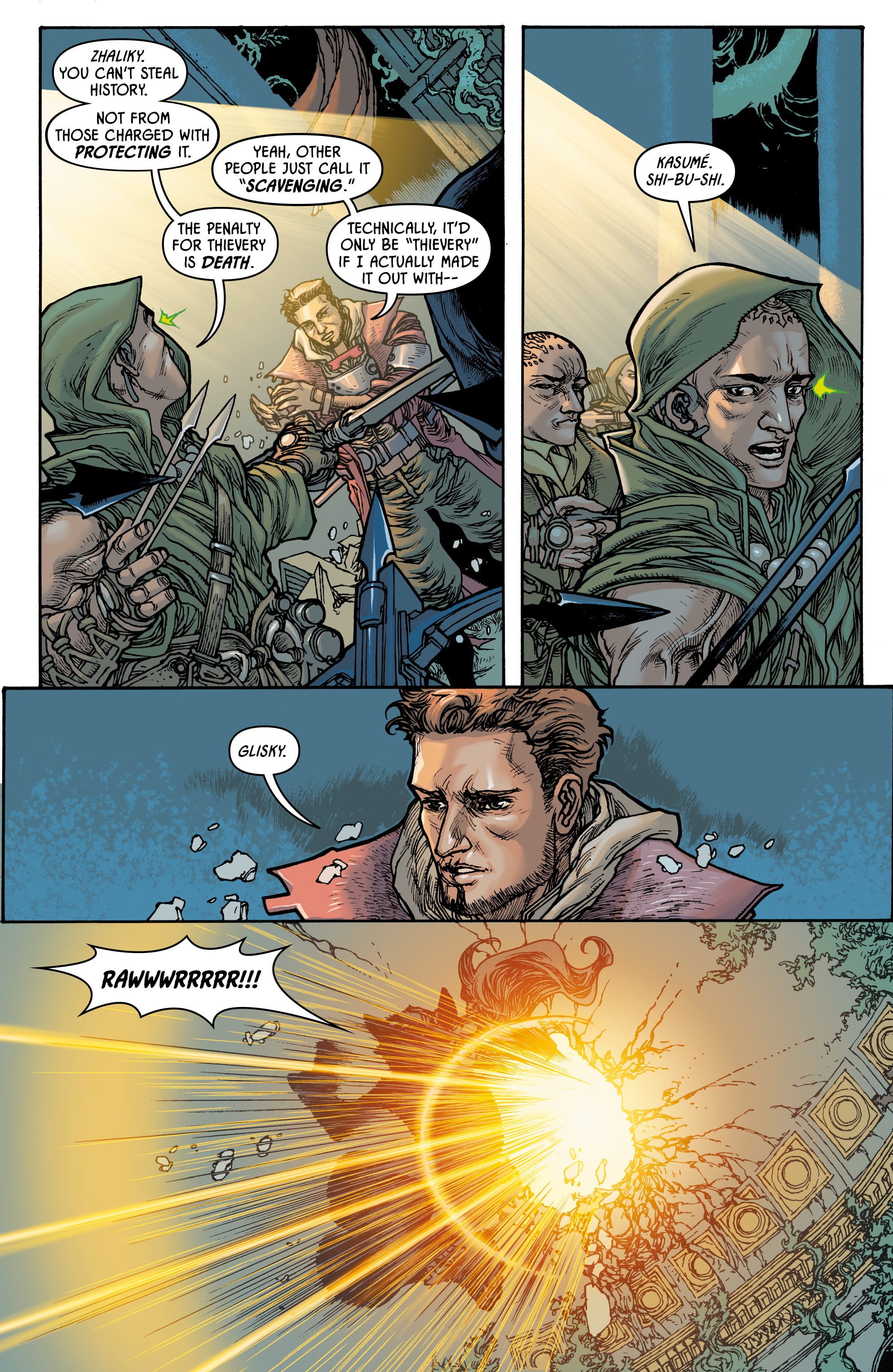
You can get your copy of Marc Guggenheim and Harvey Tolibao’s The Adventures of Ulysses Monarch #1 on Comixology today!
